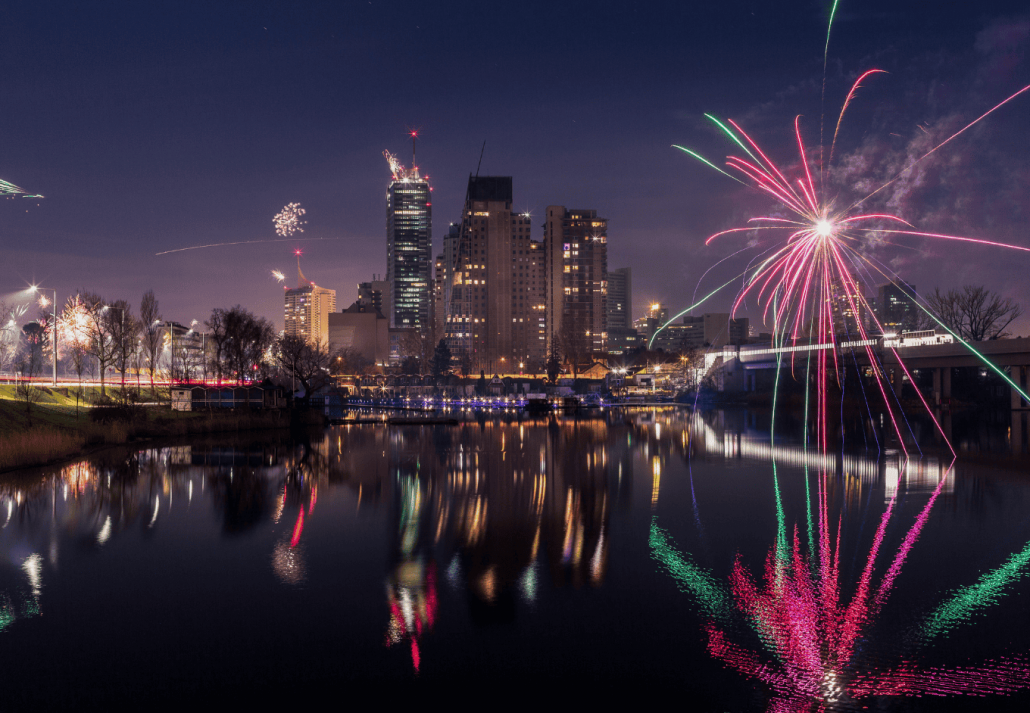New Pope: Brains, Hands, Heart… What Will He Be?
A New Chapter for the Catholic Church: The New Pope The Catholic Church finds itself standing at a pivotal threshold in its two-millennia-long journey. With the passing of Pope Francis, a man beloved for his compassion and courage, and...

A New Chapter for the Catholic Church: The New Pope

The Catholic Church finds itself standing at a pivotal threshold in its two-millennia-long journey. With the passing of Pope Francis, a man beloved for his compassion and courage, and the solemn white smoke rising from the Sistine Chapel's chimney, a new era has begun. The election of the new pope, Pope Leo XIV, signals both continuity and change for the global faithful. It is a spiritual reset not only for Rome but for the entire world.
Born Robert Francis Prevost in Chicago, this first American pope has already upended the usual assumptions about what kind of leader the Roman Catholic Church might choose. His papal name, his background, and his tone set in his first appearance on the balcony of St. Peter’s Basilica have all raised one pressing question: if Pope Benedict was the brains, and Pope Francis was the heart, what will Pope Leo XIV be?
Also Read>> Who is Papa Francisco?
A Pontiff Rooted in the Americas: Early Life and Formation

Pope Leo XIV, the newly elected pope, carries within him the cultural richness of French and Italian descent, intertwined with Spanish heritage. Born on September 14, 1955, he came of age not in Rome or Buenos Aires, but in the neighborhoods of Chicago, a city as gritty and diverse as the Catholic Church itself.
He began his formal studies at Villanova University, known for its connection to the Augustinian Order, where his identity as a thoughtful, service-oriented Christian took deeper root. He later studied at the Catholic Theological Union, a global hub for religious scholars, seminarians, and ministers focused on pastoral work in a changing world. This mix of academic rigor and spiritual inquiry would later shape the new pope’s tone and approach to leadership.
As a student, Leo XIV was described by his peers as contemplative but passionate—deeply committed to justice and the spiritual transformation of communities. His interest in canon law was sparked by an early internship with an inner-city parish, where he witnessed first-hand the power and limitations of Church governance.
A Missionary Life: From Chicago to Peru

As a young priest, Pope Leo XIV chose not the comforts of a cathedral office but the dust and grace of mission territory. He spent more than 20 years living and working among the poor in Peru, teaching in seminaries, celebrating sacraments, and serving as bishop of Chiclayo, where his deep commitment to the Augustinian mission and the people’s dignity became legend.
This was not charity for PR. This was Church in motion—solidarity, not saviorism. His hands built chapels and communities. Where his homilies came from lived experience. His fluency in Spanish wasn’t just linguistic—it was relational.
He became a well-known figure in Latin America for his fierce advocacy of indigenous rights, his insistence on education for all, and his firm but pastoral approach to interfaith dialogue. His efforts earned him recognition from not only Catholic institutions but also civic leaders who regarded him as a true man of the people.
The new pontiff knows firsthand what it means to be a missionary church.
Vatican Leadership and Rise to Cardinal

In 2023, as the voice of Pope Francis still echoed through St. Peter’s Square, then-Cardinal Robert Francis Prevost was appointed Prefect of the Dicastery for Bishops—a job that meant shaping the global face of Church leadership. Entrusted with the careful, sacred task of selecting the world’s next generation of bishops, he carried forward the pastoral and reformist spirit of the late pope Francis.
His doctorate in canon law, a discipline often seen as cold or distant, became for him a tool for justice and reform. He wasn’t just a scholar; he was a leader who taught, guided, and challenged. He was named cardinal later that year—a fellow cardinal said he had the “heart of Francis and the mind of Leo.”
Prevost’s experience as Prefect gave him a vantage point few others in the Vatican possessed—he had met with bishops across every continent, listened to concerns in both rural dioceses and global metropolises, and studied what kind of leadership was most needed in this fractious time.
The Drama of the Papal Conclave

When the papal conclave began after the passing of the last pope, all eyes turned to the Sistine Chapel. The conclave started amid speculation, but few predicted an American pope would emerge. Black smoke appeared multiple times, and the outside world waited.
Then it happened.
White smoke curled into the Roman sky. Inside, the cardinals had spoken. The bell tolled. The faithful gathered in St. Peter’s Square held their breath. The balcony of St. Peter’s Basilica opened, and a new chapter was written.
The newly elected Pope Leo XIV stepped forward.
The Sistine Chapel’s chimney has long been the silent herald of change, and as it exhaled that final plume of white, the tension across the globe dissolved into jubilation, speculation, and a renewal of faith.
First Words: Peace Be With You

In his first public appearance, Pope Leo greeted the cheering crowds with humility: “Peace be with all of you!” His voice—neither a weak voice nor one brimming with pomp—was warm and direct. There was no palace polish. Just peace.
He offered his prayers for Pope Francis, thanked his fellow cardinals, and pledged to serve as a “pastor with the people.” His use of both Spanish and Italian in his first address was more than courtesy—it was bridge-building in action. The English translation arrived later, but the meaning had already been felt across the entire world.
Observers from around the world noted the deliberate pacing, the deliberate warmth—a man speaking to all ages, classes, and corners of society. This wasn’t just a new pope; it was a new pastoral style that might shape the global Church.
The Name “Leo”: More Than Symbolic

Why Pope Leo?
Why reach back to Pope Leo XIII, a 19th-century giant of social teaching and modern Catholic thought?
Because Leo XIII was the Church’s courageous voice for workers during the rise of industrial capitalism. He blended brains and justice. By choosing the papal name Leo, the first Augustinian pope signaled an intention to honor tradition without becoming its prisoner.
Pope Leo XIV will lead a Catholic Church that’s simultaneously ancient and urgent, traditional and transformational.
To some scholars, the name was also a quiet theological assertion: that the Church must evolve through wisdom. Just as Leo XIII responded to the Industrial Age with encyclicals that transformed Catholic social teaching, Leo XIV may aim to do the same in our Digital Age.
A Church in Crisis: The Challenges Ahead

The challenges awaiting Pope Leo XIV are immense.
The lingering wounds of the sexual abuse crisis demand not only policy but penance. Financial scandals, particularly involving the Vatican Bank, continue to erode trust. The Church’s role in Latin America, where Catholicism is losing ground to evangelical movements, needs reimagining. The relationship with China remains delicate and complex. And internal debates about the role of women, LGBTQ+ inclusion, and clerical celibacy simmer with intensity.But here’s what sets Leo XIV apart: he does not deny the crisis—he walks into it with both feet on the ground, and eyes on Jesus Christ.
As one reporter put it, he is “neither shocked nor discouraged by scandal; only more resolved to bring light through transparency.”
Will He Be the Pope of Dialogue?

As the Church continues to move toward synodality, a model where clergy and laity walk together, Leo XIV brings the credibility of having actually lived that way. He’s no outsider. But he’s no insider-elitist either.
He understands what it means to be part of a Church in the barrios, not just the Vatican halls.
He has emphasized listening—especially to women, young people, and the poor. This aligns with Pope Francis’s vision but could expand under Leo’s leadership into real structural change. This is not politics—it’s pastoral theology in motion.
He’s been known to say in private Vatican meetings, “The Church cannot whisper where the world is screaming.”
A Pope of the People—or Just the Press?

Critics will wonder if this new pontiff can lead amid increasing secularism and media skepticism. Will his past as a bishop in Peru translate into strength on the global stage?
But Pope Leo XIV seems uninterested in theatrical leadership. His charisma isn’t bombastic—it’s steady, even joyful. His presence during his first Thursday as pope was understated but powerful.
The days of conventional wisdom guiding papal choices may be over. This is not a PR pope. This is a real shepherd.
Global Reactions and the American Moment

The election of an American pope—the first in Church history—sent ripples through the United States and beyond. From parish halls in Chicago to press rooms in the Vatican, there was both celebration and scrutiny.
Some questioned what it means for American Catholicism to now reflect the face of Peter. Others, especially in the Augustinian order, see in him a fulfillment of centuries of service.
Catholic universities like Villanova and Catholic Theological Union hosted prayer vigils and discussion panels, emphasizing their pride in shaping a man who would go on to lead the Catholic Church through its next act.
Looking Ahead: Brains? Heart? Or Something New?

So—what will Pope Leo XIV be?
If Benedict was the brain, and Francis was the heart, perhaps Leo XIV will be the hands. Hands that serve. Whose hands that bless. The hands that build bridges between doctrine and daily life.
He may be the first pope to truly live the Augustinian mission in both theological and human terms: to search for truth, to seek unity, and to act in charity.
He could very well be the pope who leaves the comfort of St. Peter’s walls and walks through the dusty edges of a world in pain, proclaiming not power but presence.
A Papacy Not of Power, But of Presence

Pope Leo XIV’s rise is not just about a new name or a new nationality—it is about a new moment for a Catholic Church in flux.
He inherits a legacy from the late Pope Francis that values mercy, ecological justice, and service to the margins. He follows a papacy of heart, but may carry it forward with both mind and muscle.
And so the world watches as the new pope, the elected Pope Leo XIV, takes his first faithful steps across St. Peter’s Basilica, through the centuries-old halls of the Vatican, and into the outside world, carrying not just tradition—but hope.
And that, dear reader, might just be the most powerful kind of pope yet.

 KickT
KickT 































